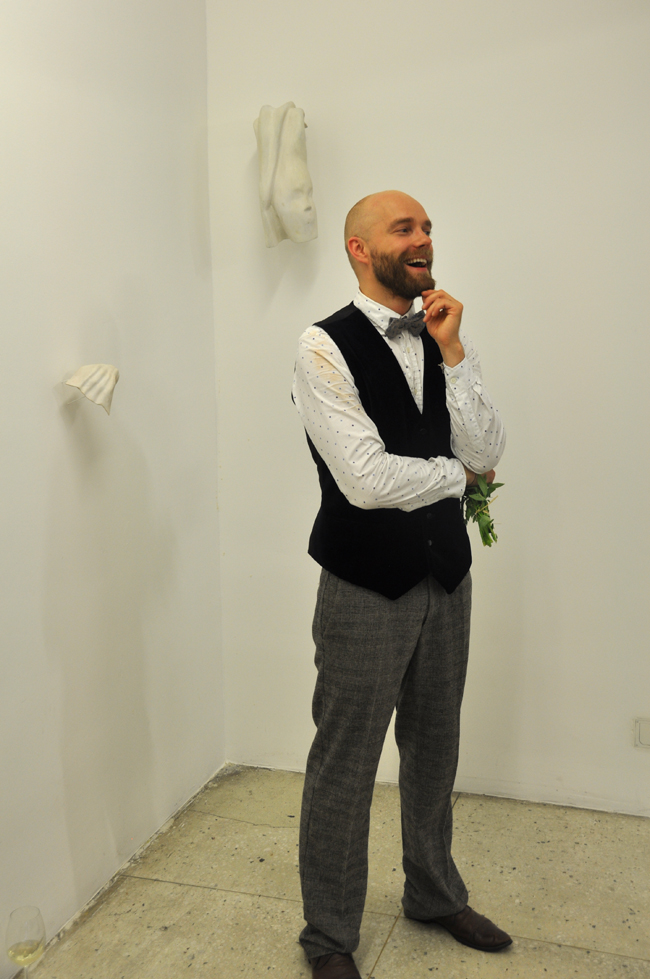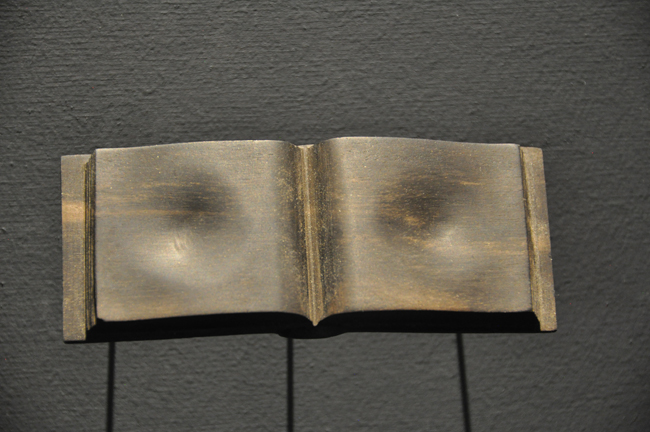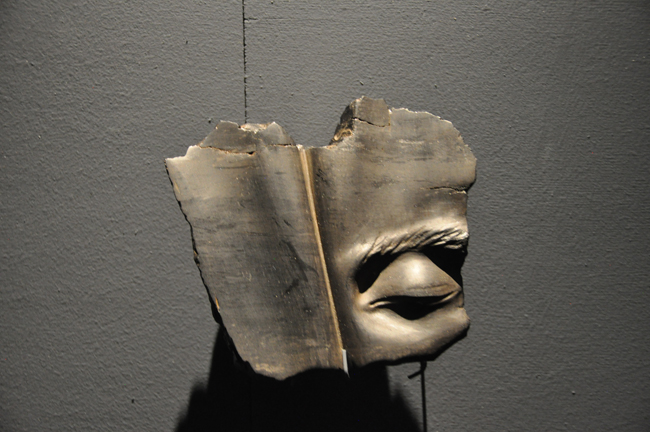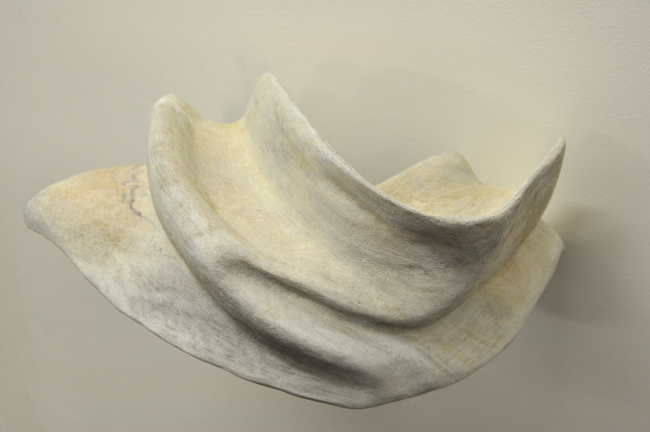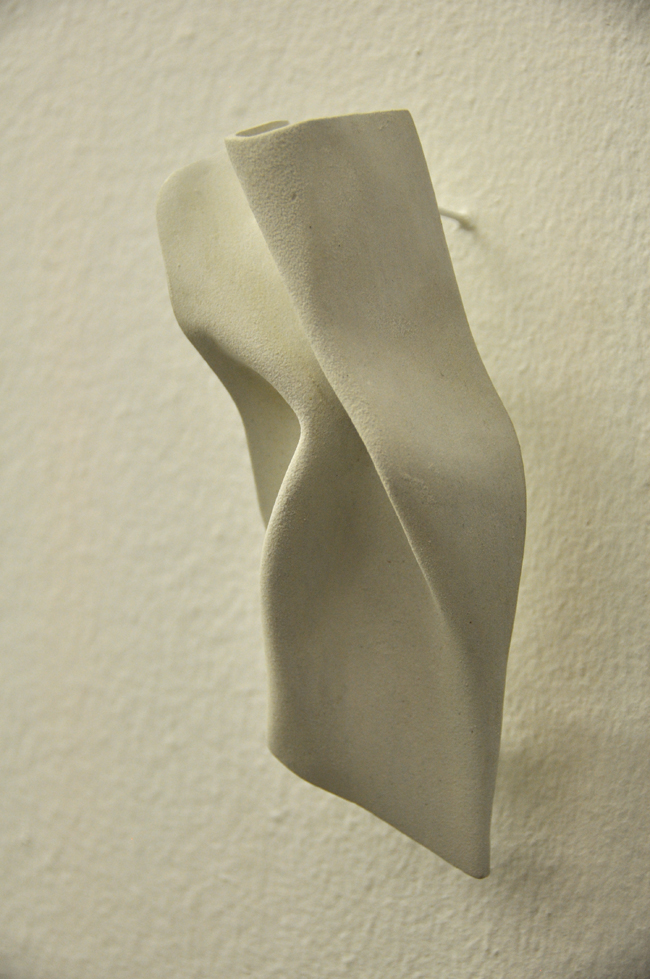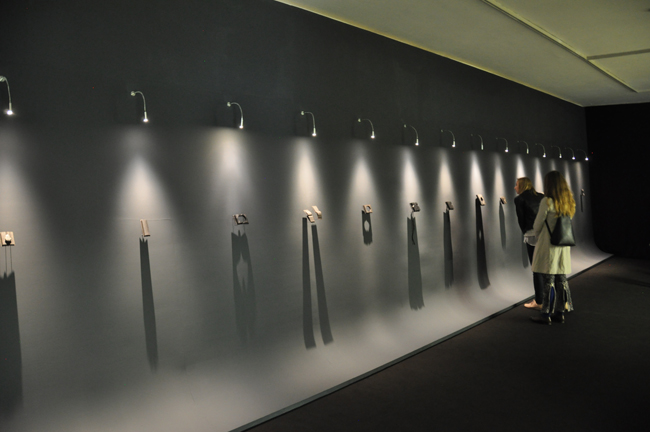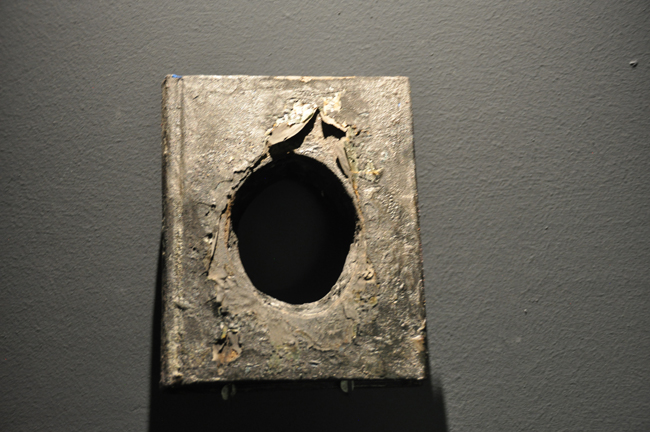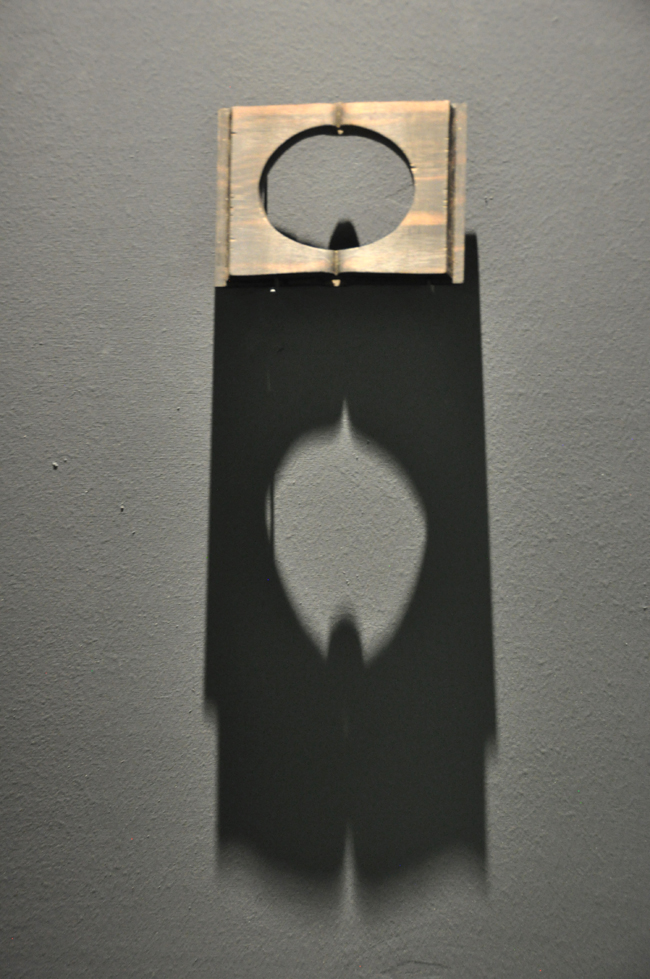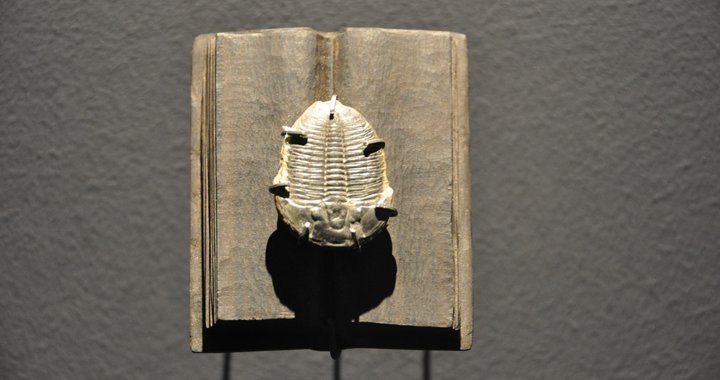
Deconstruction of an Ancient Wisdom
“The Will”, an exhibition by Estonian jewelry artist Tanel Veenre, at the Tallinn Art Hall Gallery; through 9 October
25/08/2016
“Deconstruction of an Ancient Wisdom” – this could be an alternative title to the exhibition “The Will”, by Estonian jewelry artist Tanel Veenre, which opened last week at the Tallinn Art Hall Gallery. At the center of the exhibition is “the book”, i.e., the collection of civilization’s history, ideas, evolution, thoughts and emotions. Except this time, it has been transmuted into the language of jewelry – the most intimate of art forms – thereby composing not only a spiritual, but a truly physical dialog with the viewer. Because there is something metaphysical in the fact that a book could actually be “worn” (if one had the inclination do so, that is). Which is not the same as simply taking a book into your hands and sitting down for a read, or putting a book in your bag which you then sling over your shoulder. Neither is sitting in the library’s stacks and dutifully taking notes, for that matter. Veenre’s jewelry books create a dialog that is truly “in the flesh” – by way of their form and the ostensible contents hidden in their blank pages that have been carved from bone and wood. Some of the pieces have a real book at their core, albeit one that is no longer readable in the traditional sense of the word because it seems that a hand has been punched through it; it is now a bracelet made up of a transformed mixture of letters, text and meaning. It is as if the book has been rewritten anew, but also supplemented with one’s own layer of thoughts and feelings. Under Veenre’s direction, a book can become anything – a necklace, a shawl, a ring… Nevertheless, independent of the visual transformation that has taken place, it does not lose neither its self, nor the denseness of its contents.
Tanel Veenre at the Tallinn Art Hall Gallery. Exhibition opening, 2016
The exhibition has been apparently divided into two parts, evoking two vastly different moods. The first is white, and seemingly unwritten; thoughts still float about, not yet embodied into words, sentences and paragraphs. In the absolutely white room, one sees on display jewelry that is just as white. However, the whiteness is only presumptive; because the white tracks left by an animal walking on snow only look white. Like the pages from a ripped-apart, bleached-by-time book, the jewelry hangs from, or has been stuck to, the walls of the room, creating draperies made from feelings that are fragile, spontaneous and frozen. By sheer coincidence, it brings to mind individual fragments of clothes made by the French fashion designer Madeleine Vionnet (1876-1975). Inspired by elements of ancient Greek and Roman attire, her sculpturally-draped dresses still serve as a synonym for the ultimately perfect outfit. Even simply hung on a manikin in a museum, Vionnet’s dresses still seem to hold the imprint of the body that last wore them. A sensual scrap from the past, overflowing with what is now only memories. One of Veenre’s pieces can only be worn on the shoulder, like a stiff scarf or towel whose folds only look as if they are free-falling. Although, we are also very well aware of the fact that seemingly spontaneous actions tend to have a reason for happening one way, and not some other way.
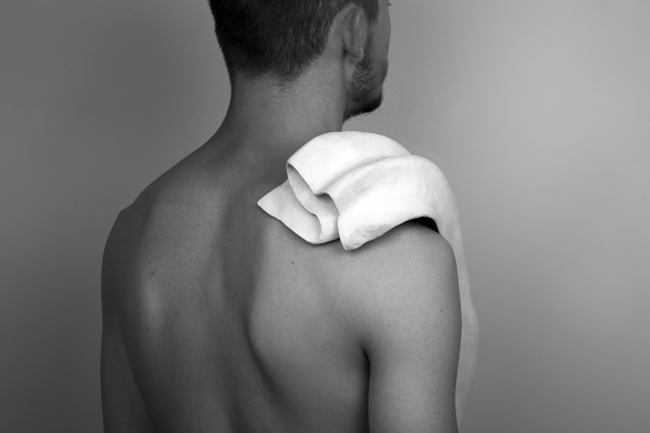
Publicity image
The second room is dark. Veenre’s colleague, Kadri Mälk, a legendary Estonian jewelry-maker in her own right, gives a spot-on description: “Drama in a silent way.” Every single piece of jewelry has been placed upon a miniature pedestal under delicate lighting, thereby casting shadows on the walls that could be likened to the tail-ends of their emotional contents.
Something in all of this inadvertently reminds one of the monumental lead books made by Anselm Kiefer. Kiefer was of the opinion that lead was the only material heavy enough to carry the density of history; it wasn’t for naught that, for centuries on end, the metal was used in alchemy experiments. Juggling multilayered (and at times, incomprehensible) references to literature, philosophy and history, Kiefer is, in a sense, himself an alchemist. As he once said: “Art really is something very difficult […] It is difficult to make, and it is sometimes difficult for the viewer to understand … A part of it should always include having to scratch your head.” In his “books”, Veenre uses ebony and jet (a form of lignite; due to its origins, it is often called “black amber”). Jet is wood that was fossilized more than 180 million years ago, and is currently still mined in England and Siberia. It was especially popular in Victorian times, when it was used in the making of mourning jewelry and rosaries. Some people believe that jet has esoteric properties – among them, the power to protect. “Jet is like cultural memory. There is something biblical about it. In its way, it’s like a part of our evolution. I really like its fossil characteristics, which is like going back in time. Jewelry artists rarely use this material, and I know of only one merchant in Europe where I can get it in such sizes that I require. It is usually found only in esoteric shops, and in very small sizes,” says Veenre.
It was only rather recently that Veenre began to use real books in his jewelry. “I think I was longing for something real. I felt that it might help me in creating a kind of sincerity and realness.”
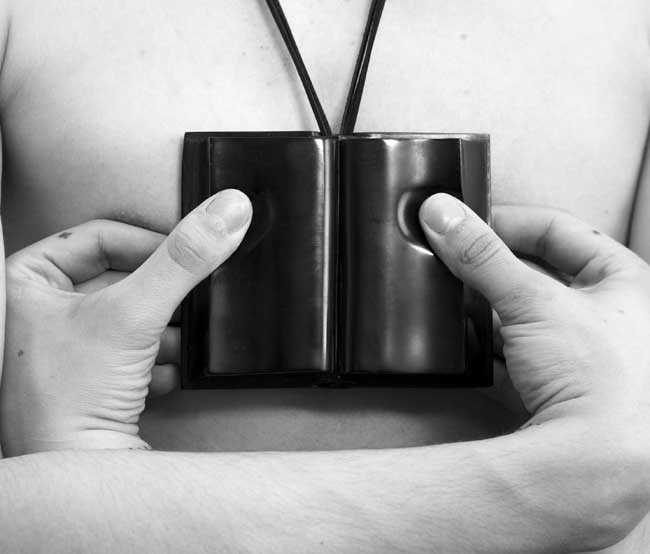
Publicity image
Veenre does not hide the fact that the way in which this whole thing began is worthy of becoming a book: “Five years ago, Harry Liivrand was curating the exhibition ‘Border City: Tallinn – Lisbon’. I don’t remember how, but back then, through association, I came to this phrase from the Gospel of John: ‘In the beginning was the Word’. Somehow, that drew me. What does that mean – ‘in the beginning was the word’? It’s very abstract. I have always been drawn to the theme of eternity, and to concepts that, in a sense, cannot be attained. ‘In the beginning’ – where is that? And where does it begin? And why can’t one get there by using one’s mind? I tried to understand what that really meant – ‘in the beginning was the word’.
It is much like the Greek word ‘logos’. One of its definitions is ‘word’, but at the same time it has many other definitions – ‘earth’, ‘opinion’, ‘speech’, ‘reason’. Then I created my first book. I carved it out of jet. Very simple. It was displayed in the Nordic jewelry exhibition ‘From the Coolest Corner’, which later traveled on to several countries in the region. This work of mine received great interest, and I suddenly understood that it possesses distinct communicative powers. Its own kind of magic. I had never thought about this before; I just worked.”
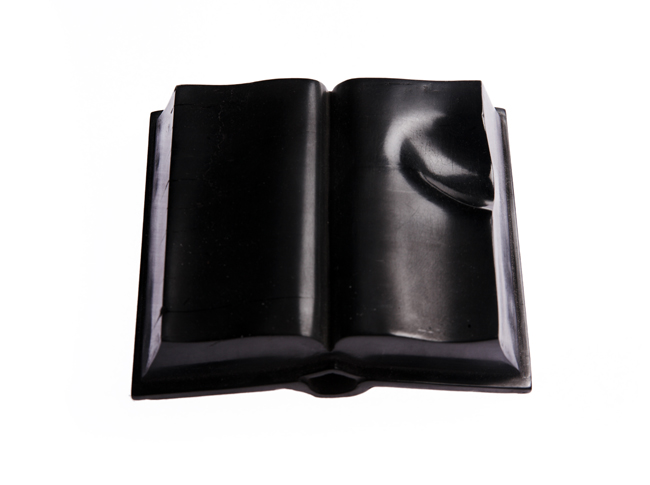
‘The Name of the Rose I’. Publicity image
“Two years ago, I returned to the ‘book project’; I took part in several shows, and I felt it drawing me in ever deeper. Physically as well, in a sense. In my youth, I had read Umberto Eco’s novel, ‘The Name of the Rose’, and I really liked it. It had an almost magical effect on me – I was very taken with these mysteries, this fusion of history and semiotics which was also very easy to read. I was traveling a lot at the time, and during one of these trips I had decided to reread ‘The Name of the Rose’. I had had a show in Valencia, which I had named after the book – ‘The Name of the Rose’ – because something in the book really spoke to me. When I opened the book in the plane, I was surprised to see that it began with the same sentence from the Gospel of John: ‘In the beginning was the Word...’. I had completely forgotten about that, and it seemed to me as if this discovery literally shook the plane. Suddenly, everything came together somehow. Completely unplanned. Is is a huge joy if you do something with great concentration and, at the same time, interest; and then later, you find out that everything was interconnected.”
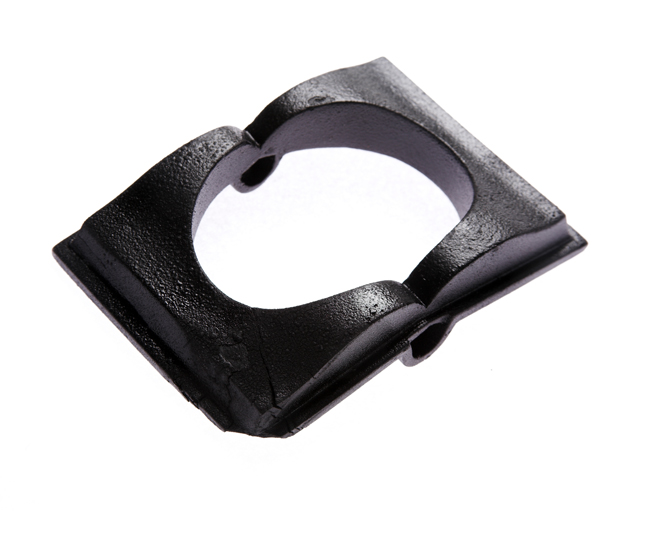
‘The Name of the Rose VII’. Publicity image
“I’m still working with books. This project continues to reveal new directions in which to head. It’s a never-ending process. Much like reading is.”
“I used to have a project in which I would wear the covers of my favorite books as pieces of jewelry. I believe that ideas are, in a sense, like gems. You read a great book and it is like jewelry for the brain, for the mind. Because afterwards, you’ll always be able to carry these ideas with you. Intimacy, jewelry books, ideas – it is like together, they all form a whole.”
‘The Name of the Rose VI’. Publicity image. Exhibition The Will at the Tallinn Art Hall Gallery. Exposition view, 2016
“I have an idea in which people could print their favorite book, and then I would make it into jewelry. A book can be covered with a very thin layer of resin, and after putting it into an oven at a really high temperature, it becomes super-hard. With this technique, you can actually preserve any book. It's not just making things, but also creating communication.”
“To be continued”, says Veenre with a smile.
Exhibition The Will at the Tallinn Art Hall Gallery. Exposition view, 2016
Exhibition The Will at the Tallinn Art Hall Gallery. Exposition view, 2016
Exhibition The Will at the Tallinn Art Hall Gallery. Exposition view, 2016
Exhibition The Will at the Tallinn Art Hall Gallery. Exposition view, 2016
Exhibition The Will at the Tallinn Art Hall Gallery. Exposition view, 2016
Exhibition The Will at the Tallinn Art Hall Gallery. Exposition view, 2016
